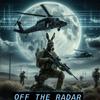54 episodes

SOTD Update with Burro 07
20/12/2025 | 52 mins.
In the episode of OTR, MAJ Matt Song (Burro Team OIC) and Keegan (Special Forces Field Team OIC) join us as we discuss some recent rotational unit rends and the current state of SOF at the National Training Center (NTC).

Insight from a Burro Alumunus Pt. 2 (Reupload)
02/12/2025 | 28 mins.
We continue our discussion in part two with MAJ Weston Rich as he gives his opinions on ARSOF in LSCO at NTC and his final takeaways from his time at SOTD-West.

Insight from a Burro Alumnus Pt. 2
27/11/2025 | 27 mins.
MAJ Weston Rich gives more of his opinions on ARSOF in LSCO at NTC and his final takeaways from his time at SOTD-West.

Insight from a Burro Alumnus Pt. 1
06/11/2025 | 42 mins.
In this episode, we chat with MAJ Weston Rich, a former Burro alumni and creator of the OTR podcast. He shares his perspective of where SOF and CTCs are and how he envisions the future. We also talk about the genesis of OTR and how it has evolved to what it is now.

Sustain the Fight: How Logisticians Prepare and Win with SOF at NTC Pt. 2 (Ep. 50)
29/9/2025 | 27 mins.
This is the follow up from our initial discussion with the Goldminer Command Team. Here we continue discussing ARSOF CFI3 (Integration, Interoperability, and Interdependence) while also getting unique insight on the challenges that a CSSB and BSB face here at NTC. Goldminer 07 and 40 discuss the opportunities for future collaboration between ARSOF and Logisticians at NTC and how that relationship can be transferred to real world operations.
More Government podcasts
Trending Government podcasts
About Off the Radar, Special Operations Training Detachment
Listen to Off the Radar, Special Operations Training Detachment, Pekingology and many other podcasts from around the world with the radio.net app

Get the free radio.net app
- Stations and podcasts to bookmark
- Stream via Wi-Fi or Bluetooth
- Supports Carplay & Android Auto
- Many other app features
Get the free radio.net app
- Stations and podcasts to bookmark
- Stream via Wi-Fi or Bluetooth
- Supports Carplay & Android Auto
- Many other app features


Off the Radar, Special Operations Training Detachment
download the app,
start listening.




































